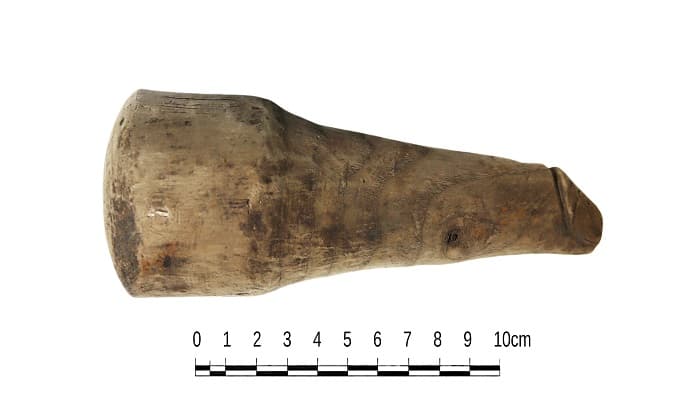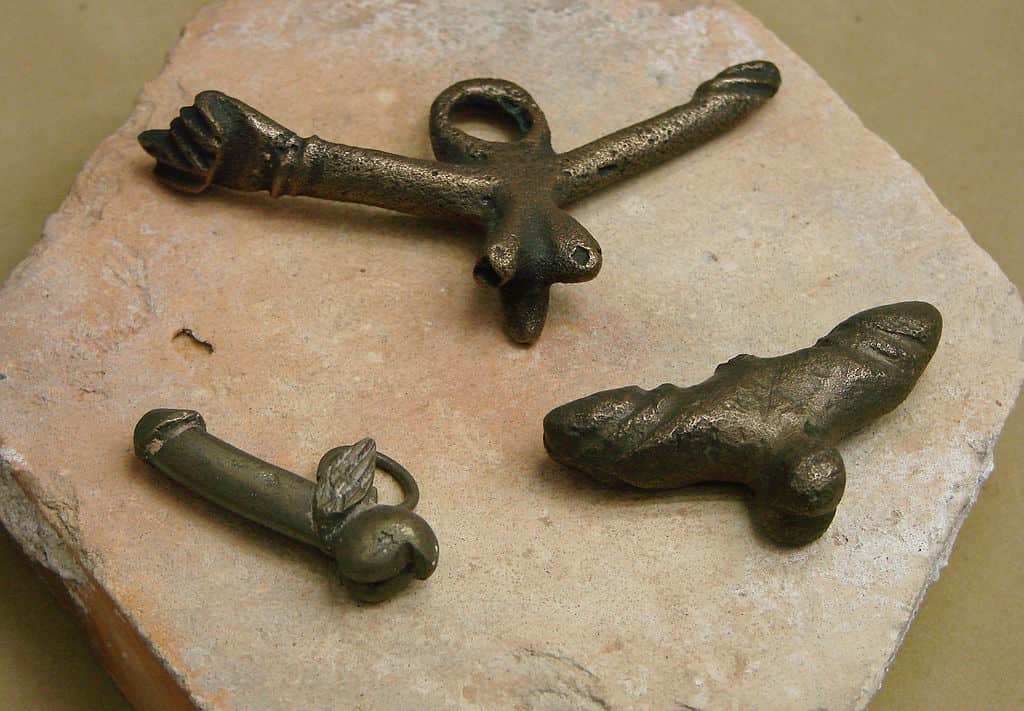“I have to confess,” said one of the archaeologists,”part of me thinks it’s kind of self-evident that it is a penis.” Rob Collins, the archaeologist, told The Guardian that maybe someone was uncomfortable with it or “didn’t think the Romans would do such silly things.”
Let’s rewind. The year is 1992, and archaeologists are exploring the Roman fort of Vindolanda in northern England. Vindolanda was a Roman auxiliary fort just south of Hadrian’s Wall in northern England, and it’s one of the more famous archaeological sites of the country. Among the numerous artifacts found on the site, archaeologists also discovered this object.

Touch wood
The object was found alongside other tools and accessories, as well as shoes and leather off-cuts. The object, which measures around 16 cm (6.3 inches) has a pretty clear phallic shape, but archaeologists initially discarded it as a trinket or a charm.
It’s not as silly as you may think: penis-shaped objects were widespread across the Roman Empire, and they were thought to bring good luck and ward off evil. The Romans had penis-shaped effigies, penis amulets, and sometimes, these could get pretty wild. But this particular find is different.
For starters, it’s lifesize. It’s not trinket-sized or stylized, it’s pretty realistic. Even more importantly, a recent analysis of the object shows that both ends of the phallus were noticeably smoother, which indicates repeated contact over time. This got researchers thinking: what if this penis-sized, penis-shaped object was used, you know, as a penis?

In a new study, they discuss this possibility, along with a couple of other options.
The prosaic hypothesis is that the object was used as a pestle, grinding either foods/spices, cosmetics, or medicine. This would explain why it’s used on both sides. Another interesting option would be that the phallus was slotted into a statue, and the passers-by would touch the statue for good luck — a common practice in the Roman empire.
“The size of the phallus and the fact that it was carved from wood raises a number of questions to its use in antiquity. We cannot be certain of its intended use, in contrast to most other phallic objects that make symbolic use of that shape for a clear function, like a good luck charm. We know that the ancient Romans and Greeks used sexual implements – this object from Vindolanda could be an example of one,” says Rob Collins, one of the study authors.

A rare find
Even if it was used as a penis, it doesn’t necessarily mean it was used for pleasure. It could have been as a tool for torture or other nefarious purposes, says Collins.
Demonstrating that the Vindolanda phallus was used as a sexual implement is challenging, the researchers agree, and there are few objects like this one conserved — especially because wooden objects require very specific conditions to be conserved archaeologically.
“Wooden objects would have been commonplace in the ancient world, but only survive in very particular conditions – in northern Europe normally in dark, damp, and oxygen free deposits. So, the Vindolanda phallus is an extremely rare survival. It survived for nearly 2000 years to be recovered by the Vindolanda Trust because preservation conditions have so far remained stable. However, climate change and altering water tables mean that the survival of objects like this are under ever increasing threat.”
Even if it is a dildo, it’s not the oldest one by any means. It would be the first Roman one we’ve ever found, but the oldest dildo could date back to the Stone Age.
Journal Reference: ‘Touch Wood: luck, protection, power or pleasure? A unique wooden phallus from Vindolanda Roman fort’, Rob Collins and Rob Sands. Antiquity https://doi.org/10.15184/aqy.2023.11






